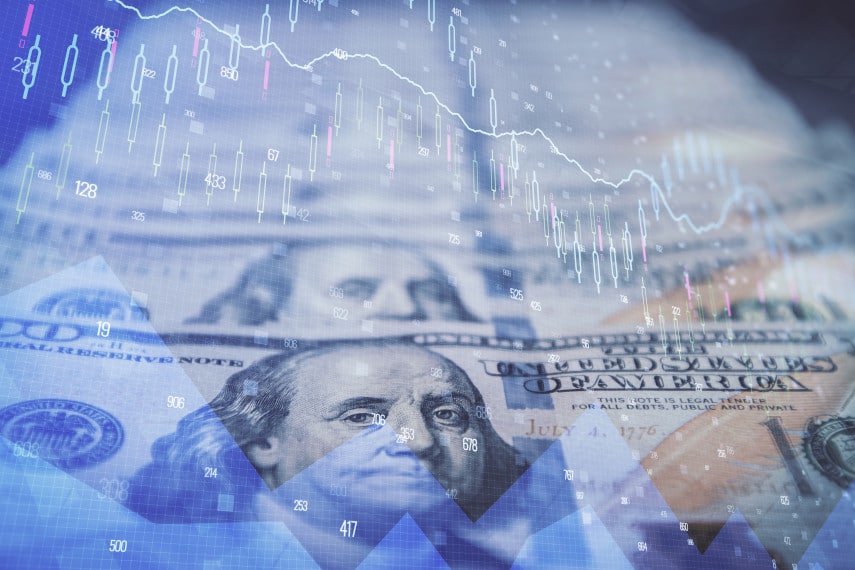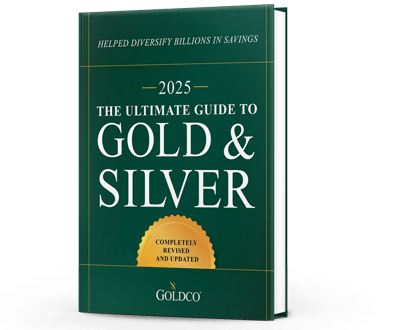6 Indicators of a Potential Recession
It seems that in the media today there are more and more mentions of the dreaded R-word: recession With growing economic uncertainty, the threat of potential recession seems to be growing as...
Economy

For those hoping for the Federal Reserve to cut interest rates, those cuts don’t seem to be coming any closer. Inflation has dropped ever so slightly, to 3.4% year on year, and the unemployment rate is slowly inching up, but the Fed seems to labor under the impression that the economy is still strong.
Wall Street still sees signs that rate cuts may happen sooner rather than later, however, as recent stock market rallies have followed the hope that the Fed may start cutting soon. But recent Fed statements have made it clear that the Fed wants to see a lot more data before it starts to cut rates.
With unemployment still under 4%, don’t expect the Fed to entertain cutting rates until it hits closer to 5%. And with inflation still at 3.4%, don’t expect rate cuts until inflation dips below 3% on a sustained basis.
Of course, that’s assuming the Fed continues to make decisions based on headline economic data, without realizing what’s really happening under the hood. And there are a few things going on right now that belie the characterization of the US economy as a strong one.
It’s no surprise to anyone that rising interest rates have collapsed the US housing market. Even though rates are at around the same level they were in 2006 and 2007, the housing market has absolutely cratered.
The combination of high prices and high interest rates has made housing all but completely unaffordable for the vast majority of the US population. Unless you already have a house to sell, have the ability to come up with all cash, or have a massive salary in order to afford an expensive mortgage, you aren’t going to be buying a house anytime soon.
Mortgage originations, in fact, were lower in 2023 than they were in 2008, and 67% lower than they were in 2021. In inflation-adjusted terms, they’re about 33% lower than they were in 2008, and 75% lower than the previous peak in 2003.
In other words, the US housing industry is facing significant hurdles. That then impacts industries further up the chain, such as construction, lumber, manufacturing, and retail hardware sales.
We saw a tremendous increase in real estate activity in 2020 and 2021, buoyed by trillions of dollars of monetary and fiscal stimulus, as well as historically low mortgage rates. That was not normal, and now we’re seeing a crash.
Whatever happened in 2021 to juice the economy and juice the housing market isn’t around anymore, and now we’re dealing with the results of the hangover from all of that stimulus.
Combined with the unaffordability of housing is the inability of most households to stay afloat. Many Americans are living paycheck to paycheck, unable even to afford an emergency of a few hundred dollars.
Credit card debt is rising, as are credit card delinquencies. Shadow debt is increasing, as buy now pay later plans are gaining in popularity among households that are increasingly stretched thin.
Since the US economy is driven by consumer spending, the inability of consumers to spend will help drive a recession. And with households increasingly tapped out, the ability of US consumers to keep spending is in serious doubt.
But why isn’t the Fed looking at these data points rather than inflation and unemployment? Shouldn’t the well-being of American households be taken into account when making monetary policy decisions, and not just the well-being of Wall Street?
Even though headline economic data isn’t showing it, it’s certainly possible that the US economy may be in the early stages of a recession. Dating a recession is as much art as it is science, and recessions are normally backdated.
One or two years from now we’ll know whether or not the US was in a recession today. But that’s of little comfort today.
There’s a lot of fear surrounding the future of the economy, and a lot of households that are hurting financially. And if the next recession is like 2008, or worse, those households could suffer even more.
That’s why so many Americans today are looking to protect themselves against financial uncertainty and economic turmoil. Pinched between weak and failing banks on the one hand, and a looming recession on the other, they’re looking for safe havens to protect their finances.
One of those safe havens is gold, which has served as a safe haven and store of wealth for centuries. Gold’s reputation for performing well even when the economy isn’t has made it a perennial favorite of those looking to safeguard their wealth.
Ever since the mini-recession of 2020, gold has regained popularity as a safe haven, with prices this year reaching an all-time high of over $2,400 per ounce. And with the uncertainty of recession hanging over the economy, there is the potential for even greater gains in the future.
Buying gold can seem daunting if you haven’t ever done it before, which is why it can help to work with trusted partners like Goldco. We have helped thousands of customers navigate the gold buying process and benefit from owning gold.
If you have retirement savings in tax-advantaged accounts like a 401(k), 403(b), TSP, IRA, or similar account, you can roll over or transfer those assets tax-free into a gold IRA, allowing you to own gold in a tax-advantaged account. A gold IRA offers all the same tax benefits as any other IRA account, but owns physical gold coins or gold bars.
If you prefer to buy gold with a direct cash purchase, that’s an option as well. You can choose to have gold shipped directly to you, store it in a safe deposit box, or store it at a bullion depository.
No matter how you choose to buy gold, Goldco has options available to you. Call Goldco today to learn more about how to put gold to work for you in protecting your hard-earned savings.

